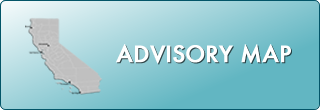Updated Fish Advisory for San Diego Bay Offers Safe Eating Advice for Fifteen Species of Fish
FOR IMMEDIATE RELEASE:
JULIAN LEICHTY
(916) 323-2396
SACRAMENTO – An updated state fish advisory issued today provides safe eating advice for 15 fish species from the San Diego Bay in San Diego County.
The California Environmental Protection Agency’s Office of Environmental Health Hazard Assessment (OEHHA) developed the recommendations based on the levels of mercury and PCBs found in fish caught from the bay.
The advisory and guidelines replace an earlier 2013 advisory for San Diego Bay, because additional data became available.
“Many fish have nutrients that may reduce the risk of heart disease and are an excellent source of protein,” said Dr. Lauren Zeise, director of OEHHA. “By following our guidelines for fish caught at the San Diego Bay, people can safely eat fish low in chemical contaminants and enjoy the well-known health benefits of fish consumption.”
When consuming fish from the San Diego Bay, women ages 18-45 and children ages 1-17 should not eat Barred Sand Bass, Pacific Chub Mackerel, sharks, Shiner Perch, Spotted Sand Bass, Topsmelt, or Yellowfin Croaker. They may safely eat a maximum of two total servings per week of Diamond Turbot, Pile Perch, Rainbow Surfperch, or Spotted Turbot, or one serving per week of Black Perch, Round Stingray, Shovelnose Guitarfish, or Spiny Lobster.
Women ages 46 and older and men ages 18 and older should not eat Shiner Perch or Topsmelt. They may safely eat a maximum of seven total servings per week of Pile Perch or Rainbow Surfperch, or two total servings per week of Black Perch, Diamond Turbot, Round Stingray, Shovelnose Guitarfish, Spiny Lobster, or Spotted Turbot, or one serving per week of Barred Sand Bass, Pacific Chub Mackerel, sharks, Spotted Sand Bass, or Yellowfin Croaker.
One serving is an eight-ounce fish fillet, measured prior to cooking, which is roughly the size and thickness of your hand. Children should be given smaller servings. For small fish species, several individual fish may make up a single serving.
The updated San Diego Bay advisory recommendations are among the more than 100 OEHHA advisories that provide site-specific, health-based fish consumption advice for many of the places where people catch and eat fish in California, including lakes, rivers, bays, reservoirs, and the California coast. There are some species of fish in San Diego Bay that are not covered by this San Diego Bay advisory. For those,
OEHHA recommends that people follow the general statewide advisory for eating fish from the California coastal locations that do not have site-specific advice.
Mercury is a naturally occurring metal that is released into the environment from mining and burning coal. It accumulates in fish in the form of methylmercury, which can damage the brain and nervous system, especially in developing children and fetuses. Because of this, OEHHA provides a separate set of recommendations specifically for children up to age 17, and women of childbearing age (18-45 years).
PCBs are a group of industrial chemicals. At high levels of exposure they can cause health problems, including cancer. Although they were banned in the United States in the late 1970s, PCBs persist in the environment from spills, leaks or improper disposal. PCBs accumulate in the skin, fat, and some internal organs of fish. In order to reduce exposure from PCB contaminated fish, OEHHA recommends eating only the skinless fillet (meat) portion of the fish.
Eating fish in amounts slightly greater than the advisory’s recommendations is not likely to cause health problems if it is done occasionally, such as eating fish caught during an annual vacation.
The health advisory and eating advice for the San Diego Bay – as well as eating guidelines for other fish species and California bodies of water – are available on OEHHA’s Fish Advisories webpage (http://www.oehha.ca.gov/fish/advisories). Poster versions of fish consumption advice are also available on the individual advisory pages. The San Diego Bay posters are available in English, Spanish, Tagalog, and Vietnamese.
OEHHA is the primary state entity for the assessment of risks posed by chemical contaminants in the environment. Its mission is to protect and enhance public health and the environment by scientific evaluation of risks posed by hazardous substances.
###
Downloads
- Jul 31, 2018


